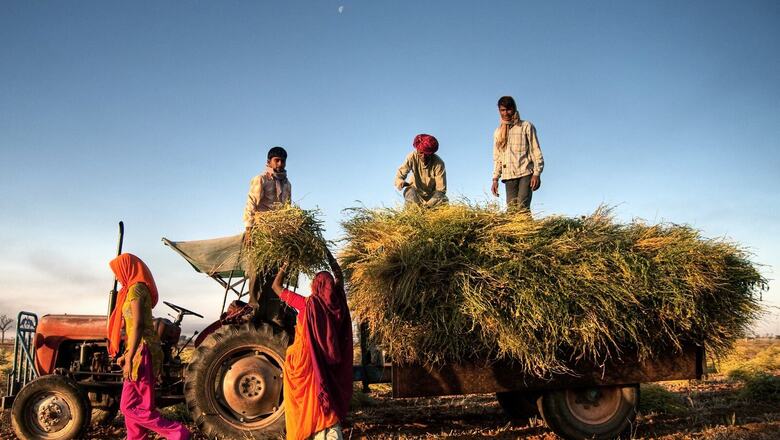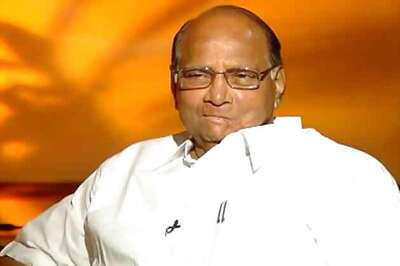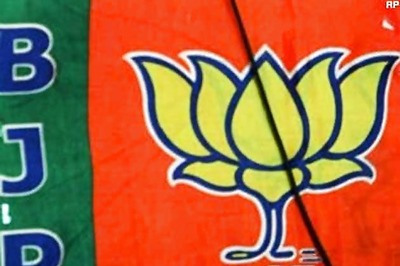
views
The longest agitation of farmers is not just to repeal the three farm laws but also against the frustration built over the decades due to poor financial gains in the agriculture sector. As per the available latest Situation Assessment Survey (SAS) of agricultural households by the National Statistical Office (NSO), an average agricultural household earned a monthly income of Rs 10,218 in 2018-19.
The government has had a Minimum Support Price (MSP) for several decades now, but that has not resolved the problem of agrarian distress. In this context, it is important to evaluate MSP as a policy option as well as the Agriculture Export Policy (AEP)-2018, to achieve the target of decent farm income. A legally mandated MSP regime is likely to be neither feasible nor sustainable in the long term whereas the missed big opportunity is an export-led agricultural revolution to increase farmers’ income; India has to set a target to export at least 10 per cent share in the global market, which is currently at mere 2.2 per cent.
Farmers demand a law that would place an obligation on the government to make necessary interventions to ensure legal guaranteed MSP. Without the legal mandate, the government is under no obligation to procure the 23 crops under MSP. There are two ways that the government can provide a legal guarantee for MSP, both with severe economic repercussions. First, the government can declare MSP as the baseline price for the 23 crops in the market. It’ll be a mandate for private players to pay MSP rates. Second, the government itself can buy these 23 crops at MSP but the government might pooh-pooh this demand by claiming that it would cost Rs 17 lakh crore, about 50 per cent of the Union Budget. This is a mischievous figure! At present, Food Corporation of India procured paddy and wheat worth Rs 2.53 lakh crore for PDS (Public Distribution System) from 6 per cent farmers. Ninety four per cent farmers in the country are deprived of the benefits of the MSP, could it be expanded beyond current levels?
Need a Stable Agriculture Export Policy
The procurement of 23 crops on guaranteed MSP is likely to be non-feasible for the government as grain stocks with the government are already overflowing and are more than double the buffer requirement, and sometimes end up rotting. Skewed MSP-dominated system of rice and wheat leads to overproduction of these crops. Further, it discourages farmers to grow other crops and horticulture products, which has higher demand and subsequently could lead to an increase in farmers income. It seems logical that instead of bypassing the market by using MSPs, the government should make serious efforts to enable farmers for the global market. The way forward is to ramp up exports in the agriculture sector.
Despite being the second-largest producer of fruits and vegetables, a food-surplus economy with mounting food stocks failed to export the surpluses and increase farmers’ income. As a result, farmers’ distress is visible across India. Government has to work hard on this missed opportunity to increase export-led agricultural growth.
To a great extent, the solution to the economic distress of Indian farmers is through a stable and predictable Agriculture Export Policy which aims at reinvigorating the entire value chain from export-oriented farm production and processing to transportation, infrastructure and global market access. India needs to have a farmer-oriented strategy to achieve the twin objectives of food security and to become a prominent agriculture exporter of the world, which will deliver incomes into the pockets of farmers through crucial export opportunities.
India’s agri and allied exports are lower than countries like Thailand and Indonesia with much smaller agricultural land. India’s export basket is a diversified mix led by rice (USD 9.42 billion), marine products (USD 5.96 billion), spices (USD 4 billion) and meat (USD 4 billion), which together constitute 57 per cent of its total agri exports, valued at USD 41 billion in 2020-21.
Since the Green Revolution in the 1960s until now, agricultural policy focused on food security and price stabilisation and neglected export-led growth. India’s foodgrain production touched a record 305.43 million tonnes in the 2020-21 crop year. The government is spending huge money on procuring and maintaining food stocks over the strategic requirements, with warehouses overflowing. If the focus is shifted towards increasing export potential, India may catch up with Brazil (7.8 per cent share of global exports) and China (5.4 per cent); the European Union (16.1 per cent share) and the US (13.8 per cent) are dominating agricultural exports.
According to the World Trade Statistical Review 2020, India’s share in global agricultural and allied products exports increased from 1.1 per cent in 2000-01 to 2.2 per cent in 2020-21. The Agriculture Export Policy aims at achieving an export target of USD 60 billion by 2022 and USD 100 billion by 2027. To meet the targets on the positive side, there is a significant structural shift in favour of most of the developing countries, increasing their share of agricultural exports by displacing developed countries due to their cheap labour. For the first time in 2019, India figured among the top 10 exporting countries by displacing New Zealand.
However, what is worrisome is the absence of a stable trade policy regime in India. To control prices in the domestic market, the government has, at different times, resorted to banning exports of major agri-commodities, viz. rice, wheat, sugar and onion. Imposition of minimum export price (MEP) is another tool often used to tame inflation. These measures create uncertainty amongst importing countries and deprive farmers of higher returns from their produce.
ALSO READ | Nudge Spending, Helping Farmers: MNREGS Can Be Rural Economy Booster in Pandemic
Challenges Ahead
India has faced problems dealing with the EU, Japan, the US etc. Stringent norms imposed on pesticide-residue chemicals hindered exports of basmati rice to these countries. Punjab, which accounts for more than 90 per cent of basmati exports, banned the sale of pesticide-containing chemicals like Tricyclazole and Buprofezin. To become an export leader in rice, India has to develop tailor-made varieties like red rice liked by the US and some other varieties required by EU and Japan also.
What is the Way Forward
* The share of India’s potential can be realized through a stable export promotion policy. It’s also imperative for India to enter free trade agreements (FTAs) with the EU, the US and the UK.
* Majority of India’s agri-exports like rice, meat and spices are low value raw or semi-processed products. An essential element of “Make in India” has to be “Bake in India”, i.e. a renewed focus on processed agricultural products.
* High-value organic products, horticulture, dairy, poultry and fisheries export potential is yet to be realized. Central and state governments need to consider the development of Dairy Export Zones (DEZs) and Organic Product Export Zones (OPEZs) for increasing exports in a WTO-compatible manner.
* Linking and skilling of farmers produce organizations (FPOs) with export-oriented food parks for producing processed cereals, fruits, vegetables, fish and marine products.
* Agricultural exports have to be properly supported by processing infrastructure, institutional back-up, standardization, packaging, storage, logistics, and connectivity to ports and airports.
* Higher investments in R&D and technology, viz. the Internet of Things, Artificial Intelligence and blockchain, for improving new varieties of crops and their productivity and export competitiveness.
The author is Vice Chairman, Punjab State Planning Board and Chairman, ASSOCHAM, Northern Region Council. The views expressed in this article are those of the author and do not represent the stand of this publication.
Read all the Latest Opinions here



















Comments
0 comment